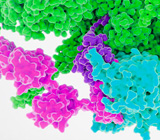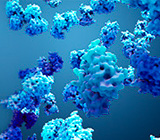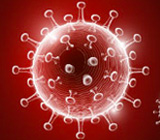-
REAGENT SERVICES
Hot!
-
Most Popular Services
-
Molecular Biology
-
Recombinant Antibody/Protein
-
Reagent Antibody
-
CRISPR Gene Editing
-
DNA Mutant Library
-
IVT RNA and LNP Formulations
-
Oligo Synthesis
-
Peptides
-
Cell Engineering
-
- CRISPR/Cas9 sgRNA
- CRISPR/Cas12a crRNA
- Prime Editing Guide RNA
- Base Editing Guide RNA
- HDR Templates
- gRNA + HDR Template Design Tools
- cGMP Guide RNA
- cGMP HDR Templates
- CRISPR/Cas Proteins
- CAR-T Knock-in Optimization Kit
- CRISPR Plasmids
- CRISPR gRNA Plasmid Libraries
- CRISPR Cell Lines
- Microbial Genome Editing
-
-
PRODUCTS
-
Most Popular Reagents
-
 Instruments
Instruments
-
Antibodies
-
ELISA Kits
-
Protein Electrophoresis and Blotting
-
Protein and Antibody Purification
-
Recombinant Proteins
-
Molecular Biology
-
Stable Cell Lines
-
Cell Isolation and Activation
-
 IVD Raw Materials
IVD Raw Materials
-
 Therapy Applications
Therapy Applications
-
Resources
-
- Pharmacokinetics and Immunogenecity ELISA Kits
- Viral Titration QC ELISA Kits
- -- Lentivirus Titer p24 ELISA KitHot!
- -- MuLV Titer p30 ELISA KitNew!
- -- AAV2 and AAVX Titer Capsid ELISA Kits
- Impurity Test ELISA Kits
- -- BSA ELISA Kit, 2G
- -- Cas9 ELISA KitNew!
- -- Protein A ELISA KitNew!
- -- His tagged protein detection & purification
- -- dsRNA ELISA Kit
- -- Endonuclease ELISA Kit
- COVID-19 Detection cPass™ Technology Kits
-
- Automated Maxi-Plasmid PurificationHot!
- Automated Mini-Plasmid PurificationNew!
- PCR Reagents
- S.marcescens Nuclease Benz-Neburase™
- DNA Assembly GenBuilder™
- Cas9 / Cas12a / Cas13a Nucleases
- Base and Prime Editing Nucleases
- GMP Cas9 Nucleases
- CRISPR sgRNA Synthesis
- HDR Knock-in Template
- CRISPR Gene Editing Kits and Antibodies
-
![AmMag™ Quatro Automated Plasmid Purification]() AmMag™ Quatro automated plasmid purification
AmMag™ Quatro automated plasmid purification
-
![Anti-Camelid VHH]() MonoRab™ Anti-VHH Antibodies
MonoRab™ Anti-VHH Antibodies
-
![ELISA Kits]() ELISA Kits
ELISA Kits
-
![Precast Gels]() SurePAGE™ Precast Gels
SurePAGE™ Precast Gels
-
![Quatro ProAb Automated Protein and Antibody Purification System]() AmMag™ Quatro ProAb Automated Protein and Antibody Purification System
AmMag™ Quatro ProAb Automated Protein and Antibody Purification System
-
![Target Proteins]() Target Proteins
Target Proteins
-
![AmMag™ Quatro Automated Plasmid Purification]() AmMag™ Quatro automated plasmid purification
AmMag™ Quatro automated plasmid purification
-
![Stable Cell Lines]() Stable Cell Lines
Stable Cell Lines
-
![Cell Isolation and Activation]() Cell Isolation and Activation
Cell Isolation and Activation
-
 IVD Raw Materials
IVD Raw Materials
-
![Quick
Order]() Quick Order
Quick Order
-
![Quick
Order]() Quick Order
Quick Order
- APPLICATIONS
- RESOURCES
- ABOUT US
- SIGN IN My Account SIGN OUT
- REGISTER

![Amino Acid Code Amino Acid Code]()
Biology Terms Dictionary
This Biology terms dictionary provides query services for biology and biochemistry terms. Please enter the biology or biochemistry terms you want to search.
List by Alphabet: A B C D E F G H I J K L M N O P Q R S T U V W X Y Z
Recombinant Protein Expression in Bacteria
Introduction
Recombinant protein expression in bacterial systems, especially using Escherichia coli (E. coli), is a key technique in biotechnology. Bacterial systems are valued for their rapid growth, cost-effectiveness, and high-yield production, making them ideal for the expression of enzymes, structural proteins, and research reagents. However, expressing complex eukaryotic proteins in bacteria presents unique challenges, such as folding issues and the formation of inclusion bodies. Through advances in vector design, expression optimization, and refolding protocols, bacterial expression systems have remained a cornerstone for both research and industry.
Mechanisms of Recombinant Protein Expression
-
Gene Cloning and Vector Design
The process begins with cloning the gene of interest into an expression vector tailored for bacterial systems. Key components of the vector include:
- Promoters (e.g., T7 or lac promoter) to initiate and regulate transcription.
- Selection markers (e.g., ampicillin resistance genes) to identify transformed cells.
- Affinity tags (e.g., His-tag, GST-tag) for simplifying protein purification.
Codon optimization is often performed to align the gene sequence with the host’s tRNA pool, thereby improving translation efficiency and protein yield.
-
Transformation and Induction
- Transformation: The expression vector is introduced into competent E. coli cells, which are then cultured on selective media containing antibiotics.
- Induction of Expression: Inducers such as IPTG trigger the expression of the target protein under the control of inducible promoters. The choice of temperature (often between 16 and 25°C) can influence protein folding and solubility.
-
Protein Folding and Inclusion Bodies
Expressing eukaryotic proteins in bacteria often leads to misfolding and the formation of inclusion bodies—aggregates of inactive protein. This occurs because bacterial cells lack the necessary chaperones and post-translational machinery for complex folding. To mitigate this issue:
- Lower temperatures slow protein synthesis and promote proper folding.
- Molecular chaperones (e.g., GroEL) can be co-expressed to assist in protein folding.
- Refolding techniques are applied to solubilize and recover functional protein from inclusion bodies.
-
Purification and Quality Control
Purification of recombinant proteins involves the use of affinity chromatography:
- Ni-NTA Chromatography: For His-tagged proteins.
- Glutathione Chromatography: For GST-tagged proteins.
- Ion-Exchange Chromatography: Further refines purity by separating proteins based on charge.
- Size-Exclusion Chromatography: Removes aggregates and ensures the correct molecular size.
After purification, techniques such as SDS-PAGE and mass spectrometry are used to assess protein purity and functionality.
Challenges and Limitations
- Formation of Inclusion Bodies: Many recombinant proteins, especially complex eukaryotic proteins, aggregate into inclusion bodies. While these aggregates can be refolded in vitro, the process is labor-intensive and may reduce the overall yield.
- Lack of Post-Translational Modifications (PTMs): Bacteria cannot perform PTMs such as glycosylation and phosphorylation, which are essential for the activity of many eukaryotic proteins. This limits the use of bacterial systems for certain therapeutic proteins.
- Protein Toxicity to Host Cells: Some recombinant proteins are toxic to E. coli, resulting in cell death or reduced yields. In such cases, tightly regulated promoters or fusion proteins are used to mitigate toxicity.
- Scalability and Batch-to-Batch Variation: Although bacterial systems are scalable, maintaining consistency across large production batches can be challenging, requiring careful optimization of culture conditions.
Applications of Recombinant Protein Expression in Bacteria
-
Molecular Biology Tools:
- DNA Polymerases: For example, Taq polymerase is essential for PCR amplification.
- Restriction Enzymes: Used for DNA cloning and genetic engineering.
- Reverse Transcriptase: Converts RNA into DNA for molecular diagnostics.
-
Therapeutic Proteins:
- Insulin: One of the first recombinant therapeutic proteins to be expressed in E. coli.
- Interferons and Growth Hormones: Used to treat viral infections and growth disorders.
- Antimicrobial Peptides: Engineered in bacteria for therapeutic applications.
-
Industrial Enzymes:
- Amylases and Proteases: Used in food processing, detergents, and textiles.
- Cellulases: Degrade plant biomass for biofuel production.
GenScript Services and Solutions
GenScript offers comprehensive solutions for recombinant protein expression in bacteria:
- Custom Gene Synthesis and Codon Optimization: Tailored to enhance expression in E. coli and other bacterial strains.
- Protein Expression and Purification Services: High-yield production of recombinant proteins with advanced purification options.
- Inclusion Body Refolding: Expertise in solubilizing and refolding proteins from inclusion bodies to restore activity.
Future Directions
- Synthetic Biology for Improved Strains: Advances in CRISPR-based genome editing are enabling the creation of custom bacterial strains with enhanced folding capacities and reduced toxicity.
- Continuous Bioprocessing: Emerging technologies in continuous fermentation offer better scalability and reduced costs, thereby improving efficiency in large-scale production.
- New Expression Hosts: Alternative bacterial hosts, such as Bacillus subtilis or Pseudomonas fluorescens, are being explored to overcome the limitations of E. coli and offer better yields or folding environments.
- AI-Assisted Protein Design: Artificial intelligence is being integrated into protein engineering to predict folding patterns and optimize sequences for better solubility and activity in bacterial systems.
Conclusion
Recombinant protein expression in bacteria remains a fundamental technology in biotechnology, providing a fast and cost-effective way to produce proteins for research, diagnostics, and industry. Despite limitations such as the lack of PTMs and the formation of inclusion bodies, advances in strain engineering, folding strategies, and continuous bioprocessing are expanding the capabilities of bacterial expression systems. As these innovations continue, bacterial systems will remain a key platform for both small- and large-scale protein production.
- Tags:
- Protein
Related Biology Tools
-
GenSmart™ Codon Optimization
GenSmart Optimization is a free online tool for performing codon optimization to improve gene expression. GenScript's patented algorithms are integrated into the tool to optimize the computing capability of high-performance sequence generation.
-
DNA Construct Design Tool
GenSmart™ Design is a free online DNA construct design tool developed by GenScript. GenSmart™ Design has two design modules, the Create Construct module for individual plasmid design and the Create Library module for DNA library design.
-
Codon Frequency Tables
This online tool shows commonly used genetic codon frequency table in expression host organisms including Escherichia coli and other common host organisms.
Service and Products

Protein Expression
GenScript recombinant protein and rAb services provide high quality recombinant proteins and rAbs for a variety of downstream research applications.

Bacterial Expression
One-stop service from Sequence to Protein starting from $1600, 4 weeks.

Insect Expression
GenScript's BacuVance baculovirus expression system was developed by our in-house team of scientists for virus production and expression of recombinant proteins from baculovirus-infected insect cells.

Mammalian Transient Expression
Proprietary High Density (HD) expression system, enhance the protein yield up to 100 fold, achieve antibody titers up to 3 g/L.

Reagents for COVID-19 Research
Gram level, ready to ship RBD proteins, ACE2 assay cell lines and pseudovirus.
-
Top Search
-
Hot Glossary
-
Antibody
If you know of any terms that have been omitted from this glossary that you feel would be useful to include, please send detail to the Editorial Office at GenScript: website@genscript.com
If your term is adopted, we will send 1,000 EzCoupon points to your GenScript account.
-





































